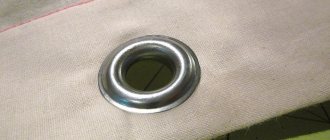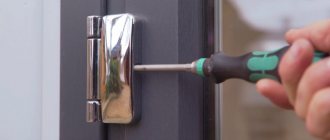In this article, the Site will tell you about the types of dracaena and how to care for it at home: placement, watering, temperature conditions, etc.
- Types of dracaena
- Accommodation
- Watering
- Temperature
- Humidity
- Top dressing
- How to trim
- How to propagate
- How to replant
- Pests and diseases
- Site Digest
Recently, landscaping at home is not just a trend, but an obligatory component of any interior. Beautiful, stylish and useful. Plants look original in compositions, but individually they do not lose their charm. Let's take a closer look at one of these - dracaena.
A spectacular representative of the asparagus family, it grows in nature mainly in tropical and subtropical regions. In her homeland, her name is translated as “female dragon.” This is due to the color of the sap that the plant produces. The dark red gum reminded our ancestors of dragon's blood.
Externally, the plant resembles a palm tree, sometimes a shrub. Most often it has a tree-like shape; the trunks of natural species can reach a diameter of up to 2 meters. Dracaena leaves are dense, linear, lanceolate or belt-shaped, and also oval.
When choosing a plant for your home, you need to consider how much space and light you can provide it with. Among the variety of species there are both giant and compact dracaenas. And if a young plant takes up little space, then an adult plant grows and requires more comfortable conditions. Likewise, different foliage requires different lighting conditions.
Types of dracaena
There are more than 150 plant species. But the most popular for the interior are the following dracaenas:
1. Fragrant - a shrub with arched glossy leaves. They are quite large, growing up to 70 cm in length and 10 cm in width. Varieties of fragrant dracaena are distinguished by the color of the leaves, the size and color of the stripes on them. There are solid green leaves, variegated with a border around the edges or with a couple of stripes. Their color varies from white to yellow. The flower got its name from its delicious aroma during flowering.
2. Marginata (fringed) - a small tree slightly reminiscent of a palm tree. The trunk is smooth and straight, the leaves are hard, linear with pointed ends. In nature, this is a very large, powerful tree, but people have domesticated small cuttings of the trunk, which look no worse and grow up to 2-3 meters. Along the edges of the leaves of dracaena there is a narrow border, most often of a reddish tint, but you can also find yellowish stripes.
3. Deremskaya - a tall tree with a thick tree trunk. Outwardly it is similar to fragrant dracaena, but its aroma when flowering is unpleasant. The leaves are large, lanceolate with yellow, gray, white or green stripes. Their length can reach up to 50 cm, and their width is about 5 cm.
4. Sandera is a bamboo-like plant that, according to Feng Shui, brings good luck and prosperity. This dracaena is perennial; at home it can reach a height of a meter or more. Its gray-green leaves are slightly twisted and grow up to 25 cm in length.
5. Hookera - South African tall dracaena, most often cultivated in greenhouses or in houses with high ceilings. It grows above 2-3 meters, and there are specimens with a bifurcating trunk. Green leaves with light edges grow up to 100 cm long and up to 10 cm wide. They themselves are dense, leathery, slightly tapering at the base.
6. Reflexa (bent) - the most capricious of dracaenas. It grows slowly, needs support and high humidity. With good care it will grow up to 3 meters in height. The leaves are small, arrow-shaped and slightly curved. The edges are painted with a yellow stripe.
7. Godsefa (surculosa) - dracaena-shrub, not similar to the above, but no less picturesque. It produces its new shoots not from the trunk, but directly from the ground. With careful care, it will grow at least a meter and will delight you with pleasant fragrant flowering. Its leaves are more oval, slightly wavy at the edges and slightly pointed at the base. The main color is green; the pattern on the leaves decorates the plant not with stripes, but with a large number of white or yellow spots. With age, the leaves will begin to turn white.
How to treat dracaena
Pay attention to the condition of the plant. Its appearance will tell you what mistakes are made in care.
The lower leaves dry out
Reason: natural process.
The death of the lower leaves, which live for 2–3 years, and the gradual exposure of the trunk is a normal phenomenon for dracaenas. If the top remains green, there is no cause for concern.
The variegated leaves turn pale
gardening.stackexchange.com
Reasons:
- lack of light;
- excess nutrients in the soil.
If the problem is lighting, just choose a more suitable place for your green pet. If the problem is overfeeding, change the soil.
Tips and edges of leaves dry out
Causes:
- insufficient watering;
- too dry air;
- drafts.
It will not be possible to restore damaged leaves. But to avoid problems in the future, pay attention to the maintenance of the plant. Choose a more suitable watering schedule, periodically spray the dracaena and protect it from drafts.
Leaves become limp and droop
YouTube channel of Yulia Ka
Reason:
- bay;
- hypothermia.
Hypothermia is especially dangerous when the soil in the pot is still damp: the roots can rot.
When flooding, remove the plant from the pot. Shake off the wet soil and dry the root system with paper towels. Remove rotten roots and treat the cuts with crushed coal.
Then plant in dry soil. Do not water for the first 3-4 days.
Leaves begin to turn yellow
nature-and-garden.com
Reasons:
- problems with watering;
- lack of nutrients.
Follow a watering schedule and fertilize the plant regularly to avoid problems.
The top is dying off
houseplant411.com
Cause: Root rot.
The barrel is also soft and bends. At this stage, it will no longer be possible to save the plant, since its roots have rotted.
Protect your plants











